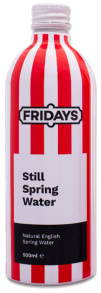Why Prime Drinks should not be primary in your life
We all need energy to get through our day, but is a sugary, heavily caffeinated energy drink really the best way to do it? Should there be more regulation about what goes into these drinks?
One such example is Prime Drinks which has become increasingly popular in the last year, but its effect on our health should be taken into consideration before guzzling down can after can. Soft drinks, including energy drinks, contain high amounts of sugar, caffeine, and artificial ingredients that can have adverse effects on our health.
Naturally after promoting the drinks on social media and the campaigns directed at children by Logan Paul and KSI going viral, Prime has become “the drink to have” and “the drink to be photographed with”, yet it seems that parents have to wise-up to what the drinks actually contain.
Prime Drink advises that there are two versions of its product: Prime Hydration and Prime Energy. Prime Hydration is marketed as a sports drink which is sweetened with aspartame, recently suggested to be ‘possibly’ carcinogenic if consumed in larger amounts; whereas Prime Energy is an energy drink that contains 200mg of caffeine (twice the amount of caffeine than in a mug of instant coffee). Excessive consumption of caffeine can lead to increased heart rate, nervousness, and sleep disturbances.
Despite the manufacturer commenting that there is a difference between the packaging of the two drinks, the can design of Prime may also be misleading. Its colourful and attractive packaging may entice young children to consume the drink without fully understanding the health consequences of its ingredients.
Overall, while Prime Energy and Prime Hydration may be marketed as a healthy alternative to traditional energy drinks, it's important to consider the negative effects of its ingredients.
In a world where consumers are continually turning to natural flavours and natural sweeteners, is it time to consider alternatives to these highly publicised drinks and to introduce further regulation?






















